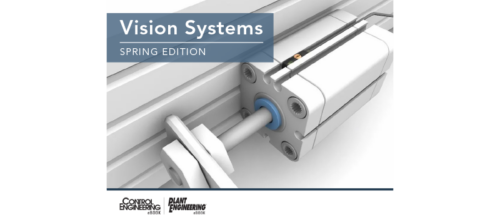A better view: Technology improvements make vision systems viable production tools
Prudent use of machine vision systems can reduce the overall need for human labor, which is a critical cost factor in developed countries. Quality control processes that currently rely on human intervention also can be error-proofed by switching certain functions to machine vision systems. These are a few of the observations contained in a report titled Advances in Machine Vision Systems, issue...
Prudent use of machine vision systems can reduce the overall need for human labor, which is a critical cost factor in developed countries. Quality control processes that currently rely on human intervention also can be error-proofed by switching certain functions to machine vision systems.
These are a few of the observations contained in a report titled Advances in Machine Vision Systems , issued by the Technical Insights research arm of New York-based Frost & Sullivan .
The report offers a technology overview and outlook for the machine vision systems industry, covering architectures by which vision systems are built, as well as details about machine vision cameras, advanced imaging and image processing techniques, infrared imaging, robotics, and artificial intelligence and vision.
Frost & Sullivan says machine vision systems are more practical now in manufacturing settings because they incorporate user-friendly features that minimize operator training, resulting in considerable cost benefits for the end user. As quality expectations continue to rise, the implementation of machine vision systems appears inevitable.
Additionally, the regulatory compliance standards in the food and pharmaceutical industries are pushing advancement of machine vision technologies. Overall, preventing liability due to defective products makes machine vision systems deployment very attractive.
“Machine vision systems are increasingly used for complex factory applications due to advancements in machine vision components such as cameras, illumination systems, processors, and imaging techniques,” notes Frost & Sullivan Research Analyst Vishnu Sivadevan. “Experience gained in solving challenging inspection tasks enables machine vision integration to progress further.”
Yet due to the availability of low-cost labor in developing economies, machine vision systems remain confined to high-end or large-scale manufacturers as they represent a significant cost for small-scale and medium-scale manufacturers. On the operational level, vision systems entail high development and deployment costs while posing challenges for future upgrades.
Vision systems also must demonstrate a consistently robust performance that overcomes changes or variations in its operating environment. For instance, these systems should adapt to various ambient light conditions in factory environments, as well as offer a fair degree of flexibility for changes in specifications of inspected products.
“Pre-deployment costs and cost of ownership are major factors that must be considered to ensure a high return-on-investment,” notes Sivadevan. “Continuous maintenance and operator training support are essential for high-end machine vision systems.”
Apart from cost-effective deployment, maintenance, and upgradeability of machine vision systems, integrators must cater to the rapid changes in manufacturing environments by providing continuous support for end users’ evolving needs.
Currently, machine vision enables core application areas such as semiconductor manufacturing inspection processes. The number of potential applications for machine vision continues to increase with the rate of innovation.
Do you have experience and expertise with the topics mentioned in this content? You should consider contributing to our CFE Media editorial team and getting the recognition you and your company deserve. Click here to start this process.


